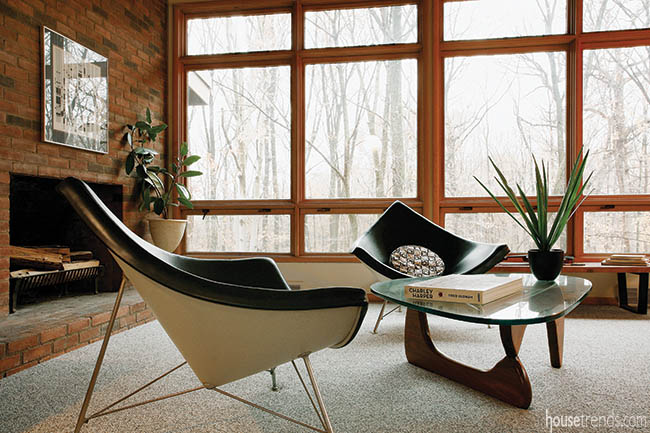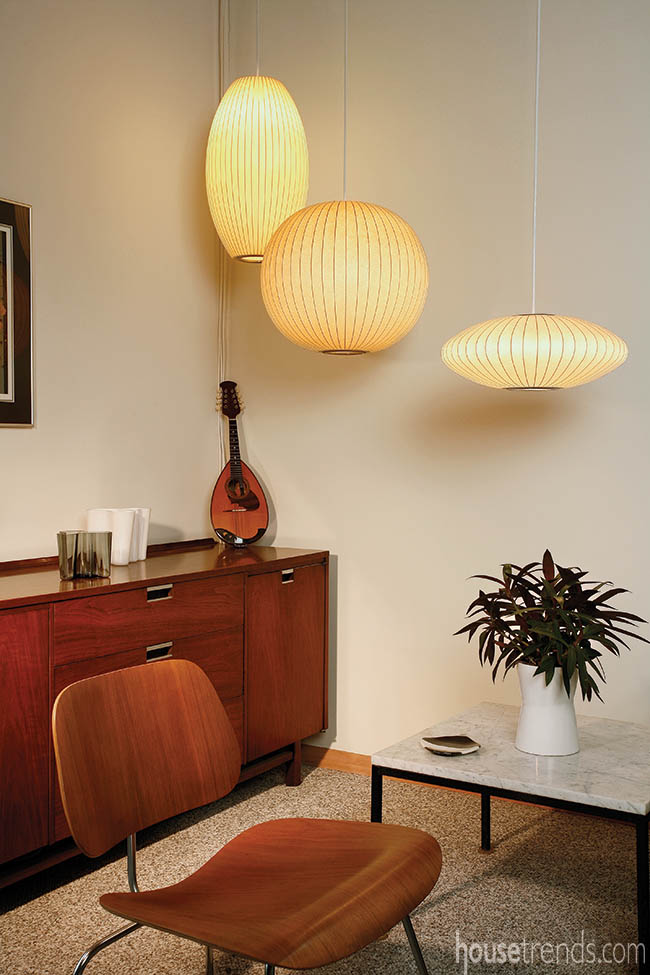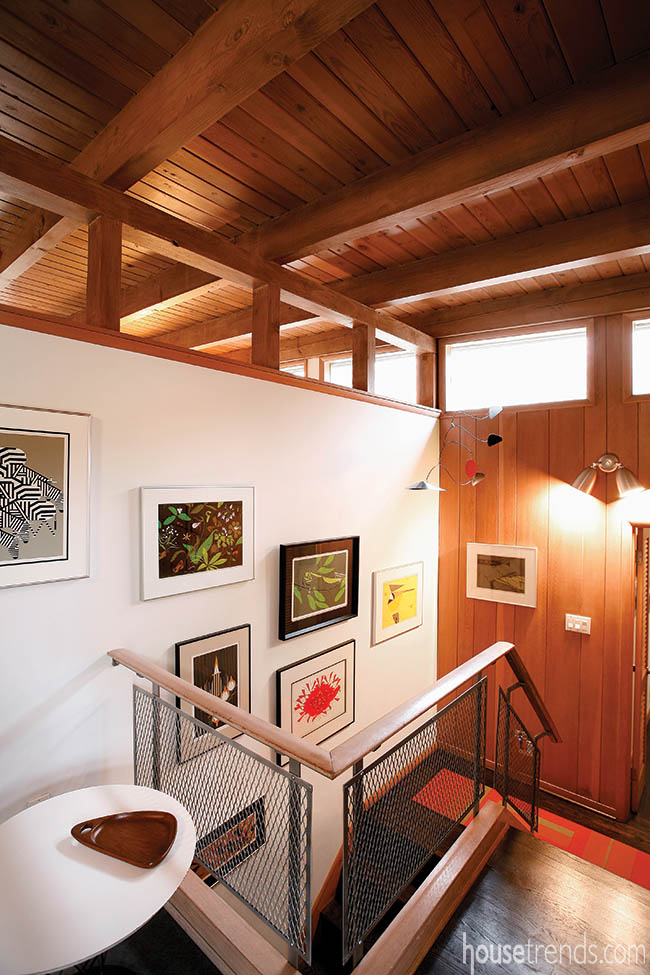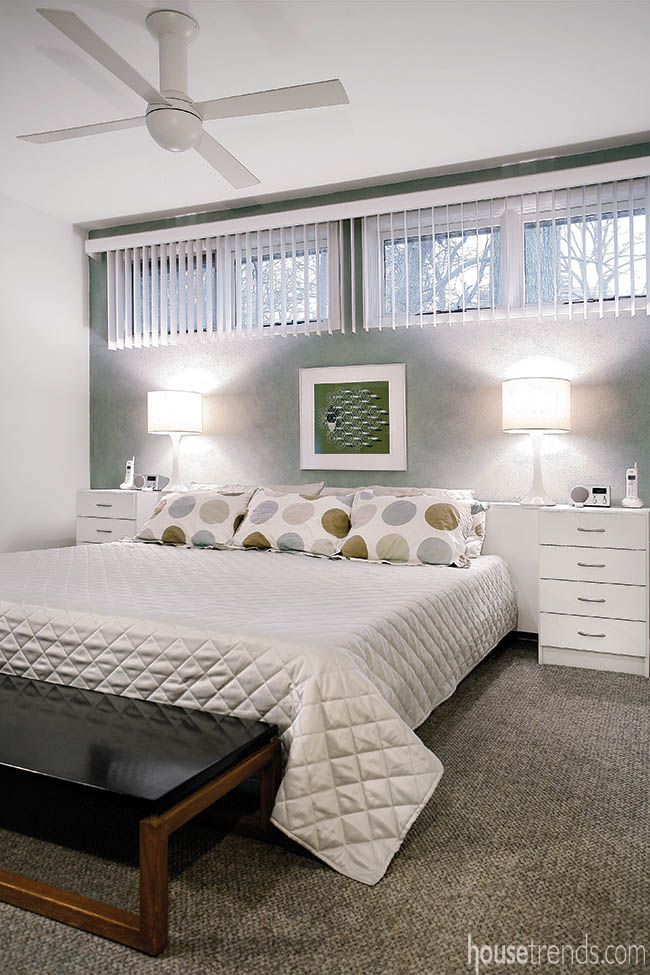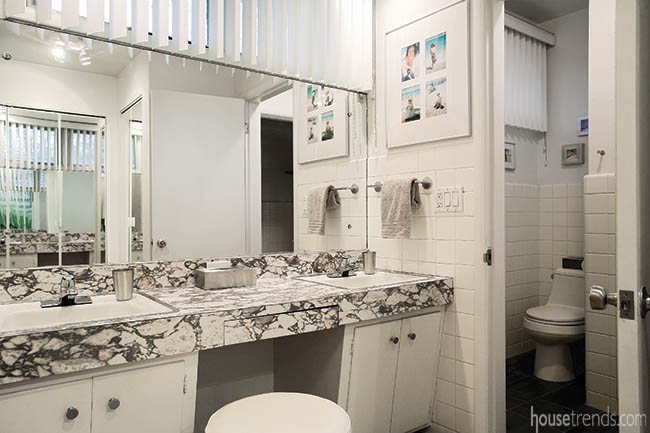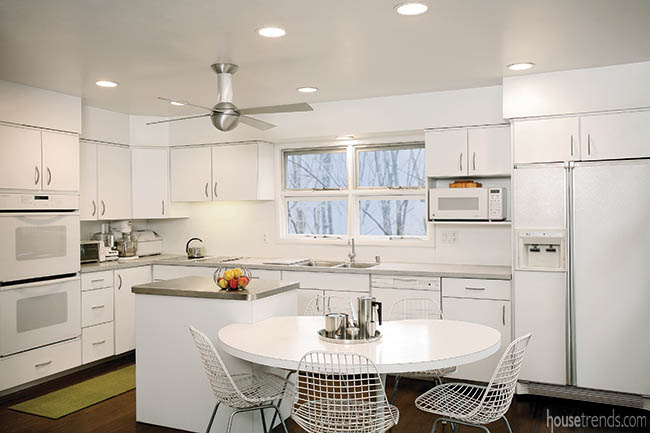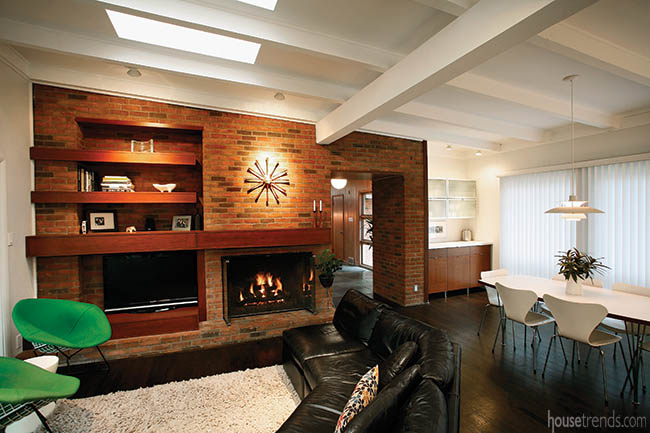Buying a set of vintage chairs for $25 each seemed like a great find to Susan Rissover 24 years ago. Little did she know, but those iconic, George Nelson Coconut Chairs would swell in value to an astounding $10,000 today. Call it luck, fate or simply being “zapped” like Nelson said he was throughout his pioneering career in the modern movement; but there has been a magnetic force between Susan and modern style for years.
The Rissovers were first drawn to the clean lines and ease of mid-century modern homes. Finding a few amazing deals on furnishings led to an affection for collecting and educating themselves on the modern movement. It has all culminated in Susan’s work preserving modern architecture.
Susan, a realtor specializing in modern homes, co-founded cf3 with Chris Magee. This non-profit group (consisting of architects, designers, and other mid-century enthusiasts) is available to consult with people about preserving mid-century elements of homes during renovations.
Susan’s foyer displays several classic mid-century characteristics. First, Redwood can be seen on the walls and ceiling. Natural materials were commonly used, and the low-pitched roof beams were often exposed as in Susan’s home. Second, mid-century homes often included basements. The staircase in the Rissover home leads to the lower level. Bedrooms were commonly located in the basement because homes didn’t have air conditioning. Finally, the Charley Harper prints on the wall are iconic mid-century pieces. One of Susan’s favorite pictures is of Charley standing in front of his work in her entrance hall.
Susan’s master bedroom is minimal in décor, allowing natural light to create a focal point through vertical blinds. Susan explains that vertical blinds were used during the 50s and 60s, so they are in keeping with the mid-century design.
Mid-century bathrooms have a lot of great characteristics—a lot of tile, separate shower and water closets off sink areas (the original Jack and Jill bath.) “You have to get past the mindset that pink tile is horrible and find a cool shower curtain that plays up the tile,” Susan suggests. “The Formica patterns can be a little wild, but they grow on you after a while.” The most important rule of thumb when buying or renovating a mid-century home is to keep the bathroom and kitchen as close to the original style as possible. This will keep the home authentic.
Kitchens are tough according to Susan because if you have a fifty-year-old kitchen it may be wonderful or it may be horrible. Metal kitchens could be repainted at a body shop or sprayed in the home. If the quality is good enough, a lot of stuff can be reused. Susan says some appliances can be reused because they were built so much better back then. A lot of companies are also reissuing period pieces that include appliances. Susan says you need to get into the mindset of the architect if renovating a kitchen. Putting in the wrong kitchen could damage the quality of the home. “The number one thing to stay away from in a mid-century home is granite countertops because they would have never done that back then,” Susan says.
It is fitting that the tour of Susan’s home began in the living room with George Nelson’s Coconut Chairs and ends in the family room—a concept introduced by Nelson in his post-war book Tomorrow’s House. Nelson, together with Charles and Ray Eames, is thought of as one of the founding fathers of American modernism. His concept of the storagewall, recreated in Susan’s mantle, was what attracted the attention of Herman Miller president D.J. De Pree. The collaboration between Nelson and Herman Miller led to many iconic pieces of modern furnishings.
RESOURCES Architect Fred Pressler, original home design; Mike Keifling and Chris Magee, fireplace redesign; Flooring Shindler Hardwood, hardwood; Kitchen cabinet refacing and countertops Solid Surface Concepts; Faucet Norwood Hardware, Arne Jacobsen for Vola; Vintage furniture Pieces by George Nelson, Charles Eames and Isamu Nogucci for Herman Miller; Eero Saarinen, Harry Bertoia and Florence Knoll for Knoll Associates; Arne Jacobsen for Fritz Hansen.; Bedroom furniture Abode, Techline; Artwork Charley Harper

